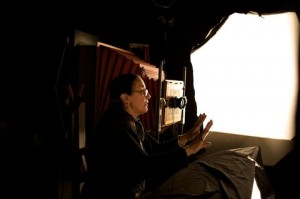Armed with a behemoth camera and hoping to present all her subjects equally and truthfully, Mary Ellen Mark created a masterful treatment of the ultimate teenage milestone, prom. Prom, at the Philadelphia Museum of Art, is a photo essay shot between 2006-2009 in which the veteran portrait photographer and her husband, filmmaker Martin Bell, pair the fleeting nature of prom night with the fleeting nature of documentary photography and film –there’s but one chance to do it right. Shot at twelve high schools in ten cities across the country, and at the Memorial Sloan-Kettering Cancer Center’s prom, Mark and Bell produced the photos and the film simultaneously, setting up adjacent studios at each prom, where their team of interns picked nearly 300 subjects. Forty-one of Mark’s portraits and Bell’s film are shown simultaneously in the Julien Levy Gallery, the first time any of the photographs have been shown publicly; a book of the entire photo series, along with the film, is now published by the Getty Museum.
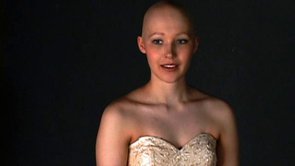
Prom night is the crown jewel in the American mythology of teenage life. It’s something different for everyone: a chance to live it up one more time before “real life” begins, a declaration of adolescent devotion, a torture session. Unlike the night itself, though, Mark and Bell’s project is permanent.
For this project, Mark chose one of five existing Polaroid 20×24 Land cameras, using one of the two housed at the 20×24 studio in SoHo. No other camera could have given these portrayals the large-scale grandeur, extraordinary detail and clarity they possess. Since 1995, Mark’s been one of the elite photographers who frequent the SoHo studio; her work with the 20×24 was previously seen in “Twins.”
This unwieldy but powerful camera uses a continuous roll of Polapan 20×24 film, eliminating the post-production process, so Mark and her technician had to have every element of the photograph in place before shooting. Since prom only lasts hours, the crew also had to act quickly and decisively so the kids could return to enjoying their evening. Everything – like the prom itself – had to be flawless.
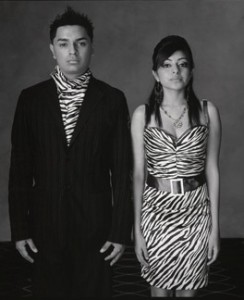
Teenagers’ theatrics can’t be overestimated. The photographs pair dramatic costuming with sky-high emotions, each vying for iconic status. As per Mark’s singularly leveling style, each is shot against a plain gray background. Nearly all the subjects pose in mannered solemnity; more than a few are heartbreaking in the rawness of the emotions displayed – anguish, unrequited love, trepidation. The diversity is staggering, with high schools of every background represented (including Mark’s alma mater, Cheltenham High School in Wyncote, PA). The teenagers are at once sophisticated and gauche, ungainly and fabulous in their finery.
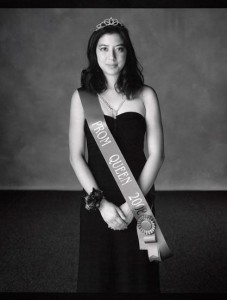
Especially apparent are the lengths to which Mark and Bell went to portray as wide a spectrum of backgrounds as possible. In the show, you see kids who were raised with unimaginable privilege alongside kids who have been tasked with adult responsibilities years too soon. It is clear that for some kids diversity is commonplace, and for some, the fear of repercussions for their choice to be with someone of a different class or ethnic background is written on their faces. The inclusion of several gay couples is a subtle reproach to those who would deprive kids of prom night due to their orientation.
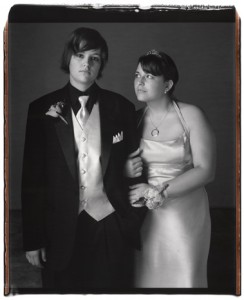
Some subjects in Martin Bell’s film look utterly dazed, put on the spot by the camera, the crew, their partners, or the weight of their own fevered expectations. “My makeup,” exclaims one girl, fighting back tears while discussing leaving her friends behind after graduation. Others are right on point. “It’s not a prom, it’s a competition. A competition between the females,” a statuesque girl intones seriously. Bell’s film is rife with hilarious moments only occasionally present in Mark’s photos; one poor kid stands gamely by, face twitching as his partner explains matter-of-factly that “he was, like, my third possible date.”
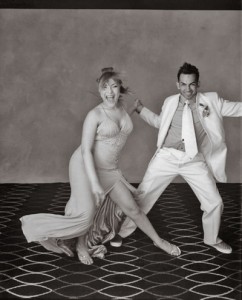
One inescapable facet of “Prom” is how much is left unspoken by the teenage portrait subjects, whether due to edits or their own reticence. Not all of the subjects are at ease, and their discomfort and self-censure can be off-putting, especially in the film, making the viewer feel like an intruder. But “Prom” wouldn’t achieve its emotional depths without the awkwardness – an essential part of being an adolescent. Mark and Bell’s work affirms that having only a few moments to stand in front of a giant camera and describe your entire high school existence is a daunting task. The artists understood that and used their combined strengths to portray the experience sympathetically.
“Prom: Photographs by Mary Ellen Mark” is on view at the Philadelphia Museum of Art’s Perelman Building, 2525 Pennsylvania Ave., through Oct. 8. Hours are Tuesday through Sunday, 10:00 a.m.–5:00 p.m.


